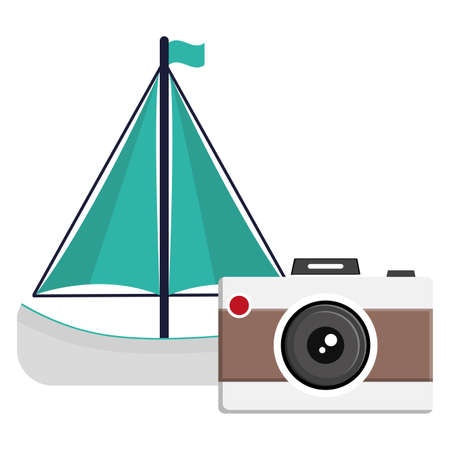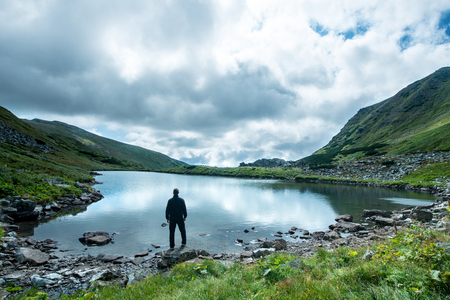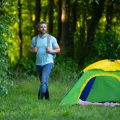Essential Kit for Wild Camping and Photography
When venturing into the wild heart of Skye and the Hebrides, preparation is your first line of defence against the notorious Scottish elements. The weather here can turn on a sixpence, from Atlantic squalls to biting midges, so both your camping setup and camera kit need to be up to scratch. For British wild camping, a robust four-season tent is non-negotiable—look for one with reinforced guy lines and a low profile to shrug off Hebridean winds. Pair this with a quality down sleeping bag rated for at least -5°C, as even summer nights can bite. A self-inflating mat or closed-cell foam pad keeps the chill of Highland ground at bay. Sturdy, waterproof walking boots are a must, along with gaiters for boggy moorland slogs.
On the photography front, durability rules. Your camera body should be weather-sealed—think Canon’s L-series or Nikon’s pro line—and paired with a versatile zoom lens (24-70mm or 16-35mm) for wide Highland vistas and dramatic skies. Don’t skimp on lens hoods and filters; UV or clear filters offer that extra barrier against rain and salt spray. Tripods should be lightweight but rock-solid—carbon fibre is ideal—since gusts on the Quiraing or Neist Point can topple lesser gear. Bring multiple dry bags: stow lenses and bodies separately to avoid condensation woes. Spare batteries are essential; cold drains power fast, so stash them close to your body when hiking. Finally, pack a rugged head torch (with red light mode for night work), a power bank, and OS Explorer maps—a GPS signal isn’t guaranteed on these storied islands.
2. Choosing the Perfect Pitch: Wild Camping Legally in Scotland
When it comes to capturing the wild beauty of Skye and the Hebrides, your base camp is as crucial as your camera kit. Scotland’s unique right to roam makes it a haven for wild camping enthusiasts, but with freedom comes responsibility. Here’s how to find that dream pitch without stepping on local toes—or the law.
Understanding Your Rights: The Scottish Outdoor Access Code
Wild camping is legal across much of Scotland thanks to the Land Reform (Scotland) Act 2003, provided you abide by the Scottish Outdoor Access Code. This means you can camp on most unenclosed land, but always do so discreetly and respectfully, keeping group sizes small and stays short—ideally just two or three nights in any one place.
Where to Camp: Skye and Hebrides Hotspots
Both Skye and the Hebrides offer a mix of rugged coastline, windswept moors, and dramatic peaks—ideal for landscape photography. But not all ground is equal. Here’s a quick guide:
| Location | Best For | Access Considerations |
|---|---|---|
| Quiraing (Skye) | Misty mountainscapes, sunrise shots | Avoid private croft land; pitch late and leave early |
| Loch Coruisk (Skye) | Remote loch reflections, Cuillin views | Accessible by boat/hiking; no facilities—leave no trace |
| Luskentyre Beach (Harris) | White sands, turquoise waters at dawn | Pitches among dunes; avoid blocking access tracks |
| Callanish Stones (Lewis) | Dramatic standing stones at sunset | No camping within sight of monuments; ask locally first |
| The Uists Machair | Open seascapes, wildflowers in spring/summer | Crofting areas—stick to margins, check with locals |
Respecting Local Land Rights & Community Relations
The crofting culture runs deep here; many fields are working land. Always avoid pitching on cultivated ground, close gates after use, and steer clear of livestock. If unsure whether a spot is suitable, ask a local—most are friendly if approached politely.
Essential Tips for the Ethical Photographer-Camper
- Arrive late, leave early—minimise your impact and avoid drawing crowds.
- Keep noise to a minimum and fires off the agenda unless absolutely necessary and permitted.
- Bury human waste well away from watercourses and paths.
- Pack out all litter—including biodegradable items.
- If photographing sensitive sites or wildlife, maintain distance and respect any posted guidance.
The secret to a memorable photographic adventure on Skye or the Hebrides isn’t just finding an epic view—it’s blending into the landscape without leaving scars. Treat both the land and its people with respect, and you’ll be rewarded with authentic moments that capture the true spirit of Scotland’s wild west.

3. Iconic Landscapes: Photographing the Isle of Skye
The Unmissable Classics: Quiraing and Old Man of Storr
If you’re camping on Skye for photography, you’re in for a treat. The island’s landscapes are nothing short of legendary, and two stand out above all: the Quiraing and the Old Man of Storr. Both are easily accessible from most campsites, but getting those iconic shots requires more than just turning up with your kit.
Lighting: Chase the Magic Hours
Skye’s mood changes with the light. For dramatic shadows and golden hues, aim to shoot at dawn or dusk. The Old Man of Storr is best photographed at sunrise when mists roll over the pinnacles and the sky catches fire with colour. For the Quiraing, early morning or late afternoon often delivers brooding skies and striking contrast – perfect for capturing that rugged Highland atmosphere.
Composition: Frame the Wildness
Both locations are vast and wild; use leading lines like winding paths or streams to draw viewers into your frame. At the Quiraing, incorporate the sweeping curves of the land. With the Old Man of Storr, position yourself to include Loch Leathan below for extra depth. Don’t be afraid to get low or climb higher for unique perspectives – but always respect local access guidelines and stick to established trails where possible.
Weather-Proof Your Kit: Prepare for Anything
Skye’s weather is famously unpredictable – sun, rain, wind, even hail can arrive within an hour. Pack a sturdy waterproof camera bag and keep lens cloths handy for wiping away drizzle. A lens hood helps cut glare during sudden sunny spells, while silica gel sachets in your bag ward off condensation. Dress yourself in layers and bring a solid pair of boots; boggy ground is common, especially after rain.
Quick Tips for Success
- Scout your location the evening before to plan your angles and compositions.
- Use a tripod for stability in low light or blustery winds.
- Take spare batteries – cold and damp drain them faster than you’d think.
With preparation and patience, you’ll return from Skye not only with memories of wild nights under canvas but with images that capture its untamed beauty – true trophies for any photographer who braves these Hebridean legends.
4. Hebrides Highlights: Getting Off the Beaten Track
If you’re serious about landscape photography, the Outer Hebrides offer a raw, untamed beauty that rewards those willing to stray from the tourist trail. With miles of white sandy beaches, windswept moorlands, and ancient standing stones battered by Atlantic gales, this remote archipelago is a haven for hardy photographers looking to capture something truly unique.
Essential Locations for Iconic Shots
| Location | Subject | Best Time to Shoot |
|---|---|---|
| Luskentyre Beach (Harris) | Expansive white sands, turquoise waters | Golden hour; dramatic winter light |
| Callanish Standing Stones (Lewis) | Megalithic stones, atmospheric landscapes | Dawn or dusk for long shadows |
| The Uists’ Machair | Wildflower meadows, sand dunes, wildlife | Late spring through summer mornings |
| Bosta Beach (Great Bernera) | Tidal islets, Iron Age house remains | Low tide; overcast days for mood |
| Cailleach na Mòine Bog (Lewis) | Moorland textures, shifting weather fronts | Misty mornings or stormy afternoons |
Tactics for Remote Shoots
Shooting in the Hebrides is not just about finding the right spot—it’s about being prepared for isolation and unpredictable conditions. The further you get from main roads and villages, the more self-reliant you’ll need to be. Always pack OS maps, a compass, and a reliable GPS device—mobile coverage can be patchy at best. Carry extra batteries and memory cards; cold Atlantic winds drain power rapidly.
Kit Checklist for Remote Exposure:
- Waterproof rucksack with dry bags for camera gear
- Sturdy tripod—essential for wind-exposed beaches and bogs
- Weather-sealed lenses or protective covers
- Layered clothing: base layer, insulating mid-layer, waterproof shell
- Head torch with spare batteries (for pre-dawn treks)
- Snacks and a flask of tea—there are no shops on the machair!
- First aid kit and whistle for emergencies
- Permits if planning wild camping on certain estates (check local bylaws)
Navigating Local Conditions Like a Pro
The Hebridean climate is famously fickle: one moment it’s blue skies, the next it’s horizontal sleet. Pay attention to local weather forecasts and always have an exit plan if conditions turn nasty. Respect local crofting boundaries and livestock—stick to established tracks where possible, and always shut gates behind you.
Survival Tip:
If you’re venturing into remote moorland or coastlines alone, leave your route with someone trustworthy. In these parts, it’s not uncommon to go hours—or even days—without seeing another soul.
5. Staying Safe and Sustainable in the Wild
Photographing the wild grandeur of Skye and the Hebrides demands more than a keen eye; it requires a deep respect for the land, an unwavering commitment to safety, and a strict adherence to sustainable practices. In these remote reaches, where weather can turn on a sixpence and help may be hours away, your preparation and conduct are as crucial as your camera gear.
Guidelines for Responsible Camping
Wild camping is permitted across much of Scotland under the Scottish Outdoor Access Code, but this privilege comes with serious responsibilities. Always pitch your tent discreetly, away from homes, roads, or cultivated land. Stick to durable surfaces like grass or established campsites when possible. Avoid lighting open fires—use a portable stove instead—and never cut live wood. Keep noise to a minimum and leave no trace of your overnight stay; future visitors and local wildlife will thank you.
Leave No Trace Principles
Adhering to Leave No Trace principles is non-negotiable. Pack out all litter, including food scraps and biodegradable waste, as even small fragments can harm local fauna or spoil pristine views for fellow photographers. Use biodegradable soap at least 30 metres from any water source when washing up. Minimise erosion by sticking to paths and established tracks, especially in fragile moorland or coastal dunes. Photograph with respect: avoid disturbing nesting birds or trampling sensitive plant life just to get that perfect shot.
Essential Survival Skills for British Coastal and Upland Environments
The Hebridean weather is nothing if not unpredictable—one moment bathed in golden light, the next lashed by Atlantic squalls. Master basic navigation skills; GPS can fail, so carry a map and compass and know how to use them. Dress in layers using moisture-wicking fabrics, and always pack waterproofs even if the forecast looks fair. Know how to recognise hypothermia and treat minor injuries—first aid knowledge is invaluable when help is distant. Keep a charged phone but don’t rely on signal; carry a whistle or personal locator beacon in especially remote areas. Lastly, always inform someone of your planned route before you set out.
By combining gritty self-reliance with environmental stewardship, you ensure that Skye’s brooding peaks and the Hebrides’ windswept shores remain as wild and wondrous for future photographers as they are today.
6. Local Know-How: Culture, Etiquette, and Weather Wisdom
Venturing into the wilds of Skye and the Hebrides isn’t just about chasing the perfect shot; it’s about immersing yourself in the land’s unique rhythm and respecting its people. Understanding local culture and etiquette can make or break your experience as a photographer camping out in these storied isles.
Respecting Highland Hospitality
The Scottish Highlands and islands are famed for their warm welcome, but this hospitality is earned through mutual respect. Always seek permission if you’re setting up camp near private crofts or traditional settlements. Leave no trace—pack out all rubbish, avoid damaging flora, and keep noise to a minimum. When photographing locals, especially crofters or fishermen, always ask politely before snapping portraits. A simple “May I take your photo?” goes a long way here.
Essential Scottish Terms for Adventurers
Brushing up on some local lingo not only breaks the ice but shows genuine respect for Scotland’s heritage. Useful terms include:
- Machair: The coastal grassy plains found especially in the Hebrides—prime locations for sunrise shots.
- Bothy: A simple shelter or hut, sometimes open to travellers; invaluable for escaping sudden squalls.
- Dreich: Describes those grey, drizzly days that create atmospheric landscapes.
- Ceilidh: A traditional gathering with music and dance—photogenic if you’re invited!
Navigating Unpredictable Weather
The weather in Skye and the Hebrides is notoriously fickle—four seasons in one day is not uncommon.
Forecasting Tips for Photographers
- Use UK-specific weather apps like Met Office or MWIS (Mountain Weather Information Service) for hyper-local updates.
- Heed the wind: even a breezy “haar” (sea mist) can roll in fast from the Atlantic, transforming scenes within minutes.
- Always have waterproof gear ready—not just for yourself but for your camera kit too.
Embrace moody skies; often, it’s the interplay of light and shadow after a passing shower that makes for iconic images.
Minding Local Customs and Access Laws
The Scottish Outdoor Access Code grants remarkable freedom to roam, but with responsibility. Stick to established paths when possible to avoid erosion. Livestock are common—close gates behind you, keep dogs under control, and never disturb grazing animals when composing your shot.
Tapping Into Community Wisdom
If you find yourself in a village pub or community centre, don’t hesitate to strike up conversation—locals are often generous with advice on hidden viewpoints or upcoming ceilidhs worth documenting. Blend in, listen more than you speak at first, and you’ll earn stories (and perhaps locations) unavailable in any guidebook.
By honouring local customs, mastering regional terms, and staying one step ahead of the weather, you’ll not only return with iconic images of Skye and the Hebrides—you’ll come back with stories worthy of sharing around any campfire.


